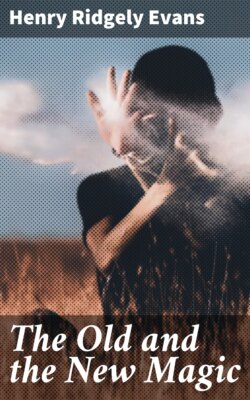Читать книгу The Old and the New Magic - Henry Ridgely Evans - Страница 14
На сайте Литреса книга снята с продажи.
IV.
ОглавлениеTable of Contents
Late in the year 1769, Pinetti appeared in Hamburg and exhibited with great success in the “Drillhause,” where Degabriel and Philadelphia had played previously. From there he went to the principal cities of Germany and arrived at Berlin, where, in the then “Doebbelin’schen Theatre,” in the Behrenstrasse, he produced his “Amusements Physiques,” and soon became the avowed idol of the public.
In August, 1796, he appeared in Hamburg, at the French Theatre, on the Drehbahn, where his receipts were considerable. Such was not the case, however, in Altona, whose inhabitants were distinguished by lack of interest in any manifestation of his art. He gave there three exhibitions, which terminated with two empty houses. In Bremen, whither he next turned, the public was even more indifferent than in Altona, so that he abandoned the intention of performing there, returned to Berlin and there remained for some time. {36}
Pinetti derived large profits from his entertainments. His entrance fee was by no means low. In Hamburg and Berlin, for instance, the price of the best places was a thaler—equivalent at present values to about ten marks, $2.50. Pinetti saw carefully to the comfort and pleasure of his patrons, and heightened the effect of his skill by every available means. The eye was gratified by the splendor of the scenic accessories. In the middle of the stage, upon a superb carpet, stood two massive tables, which served in performance of the experiments. They were covered with scarlet cloths, bordered with broad stripes of dark velvet, richly embroidered in gold and silver. Further in the background stood a larger and a smaller table, with the same decorations, and with relatively slender and elaborately carved legs. Close to the rear of the stage, with a cover extending to the carpet, was a very long table which was set forth with magnificent candelabra and brilliant apparatus. The above-mentioned tables were not moved from their places. In the middle of the stage, hung from the ceiling an immense chandelier of crystal, with countless candles. The artist made his entrance and exit through silken hangings.
As in Paris, so also in Berlin, Pinetti found an adversary, in the person of Kosmann, professor of physics, who in daily and periodical publications sought to explain Pinetti’s experiments. These elucidations were collected, bound together and published in Berlin in the year 1797. The English translation of the title is as follows: Chevalier Pinetti’s Recreations in Physics, or Explanation of His Tricks. As with Decremps, so fared it with Kosmann. His explanations did not meet with public accord, and the contemporary press denominated the two authors “who sought to belittle Pinetti’s skill,” as mere apprentices compared with the latter, and their expositions “shallow and unsatisfactory.” Naturally! The laity invariably form a false conception of the nature of the art of magic. They suppose the most complicated mechanism in the apparatus which the artist uses, and overestimate the manual skill of the performer; and when their ability is insufficient to explain matters after their own fashion, they prefer to endow the performer with preternatural power rather than accept the “shallow” elucidations of {37} “ignorant” expounders. They do not realize that every trick is only what the artist is able to make it, and that the simplest illusion may take an imposing aspect through the accessories thrown about it and the manner in which it is presented.
Whatever opinion the laity might have of these works, their value was in no wise lessened for the instructed. Robert-Houdin, an incontestable connoisseur, as well as a “classical” witness, calls the work of M. Decremps, White Magic Unveiled—the first edition of which could not have been unknown to the Berlin professor—“an excellent work.”
